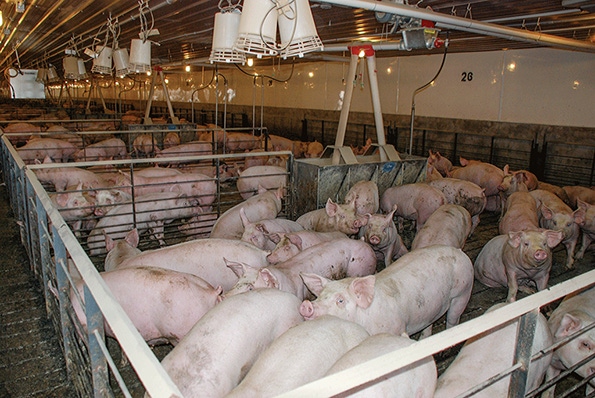Focus on market opportunities in futures rally
March 20, 2016

We’ve continued to see lean hog futures and margins inch up the past 30 days, and we’re seeing near contract highs in many futures contracts this past week. The question remains can we continue the futures rally with limited improvement in cash and cutout?
The spread between current cash prices, around $65 per hundredweight, and the nearby April futures, around $72 per hundredweight, is historically wide for this time of year. Total hog numbers coming to market have started to come down and, with exports looking up, nothing has turned the market south yet. Let’s hope this continues and pushes returns into the black in the fourth and first quarters.
Reality is that low-cost producers are already near breakeven, and in those time frames, if we don’t start to see cash and cutout push up soon, there could be deterioration in margins. Nothing new here as most of the industry is expecting more total production as we move forward.
With multiple new plants could lower utilization become the new norm?
As we look ahead, it’s important to take into consideration the multiple hog packing plants coming on line over the next few years. This will change the packer landscape. It will be an interesting journey to see just how much expansion might happen to fill this new shackle space or if packers will learn to live at lower utilization levels in their plants.
That’s definitely not something that the majority of hog packers have had to live with for a while. In looking at some recent data from the USDA’s Economic Research Service, the farmer’s share of the pork retail value has steadily dropped over the last 18 months. It has fallen from a high point greater than 35% early in 2014, to nearly 20% at the end of 2015.
One would have expected that number to be higher given the shortages in early 2014. However, if you look back over 2010 through 2013 the farmer’s percentage of retail value remained in a relatively tight range around 30%. Clearly the big drop has been impacted by larger hog supplies and tightening packing capacity. That data seems to paint a clear picture as to why multiple plants are being built and why pork producers want to be involved in packer ownership.
After all, 10% of the retail value is a big number, and with some strong producer balance sheets they have the capital to look at making investments further down the food chain.
There’s no doubt all producers are welcoming more pork packing plants and more players as it should help bring basis between cash and cutout together and hopefully keep the farmers share of retail value in line. The new plants should be good for basis in the short term, but we still have to keep in mind that there is significantly more meat to sell if expansion happens. With currency exchange rates moderating the last few months and the appearance and improvement of China in the export markets we just may be able to do it.
The reality though is if we expand at a greater pace than domestic production, we will continue to rely more heavily on the export market, which means volatility in margins will potentially increase.
If you operate with a significant amount of leverage on your balance sheet it will become more important to protect your equity and manage through market swings. As we increase the percentage of pork exports, keep in mind the world will continue to get smaller and the impacts of currency and political environments will get larger.
At the end of the day, the low-cost producers should and will carry the day, and the beauty of the situation is North America still carries some of the lowest costs in the world. It is clearly evidenced by the Chinese live hog price equaling nearly twice that of the U.S. price in recent months. The changing landscape can be both exciting and scary but U.S. hog producers’ resiliency, improvement and openness to change continues to push hog production to new levels.
Justin Roelofs is a senior financial services executive with AgStar Financial Services. For more insights from Roelofs and the AgStar Swine Team, including their weekly video Hog Blog, visit AgStar.com. If you’d like more information on AgStar’s Margin Manager Tool check it out at AgStar.com/MarginManager.
You May Also Like



